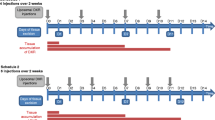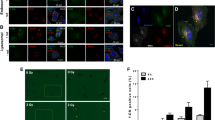Abstract
Despite significant advances, the radiotherapy and chemotherapy protocols marginally improve the overall survival of patients with glioblastoma. LipoplatinTM, and LipoxalTM, the liposomal formulations of cisplatin and oxaliplatin respectively, were tested on the F98 glioma cells for their ability to improve the cell uptake and increase the synergic effect when combined with ionizing radiation. The cytotoxicity and synergic effect of platinum compounds were assessed by colony formation assay, while the cellular uptake was measured by Inductively Coupled Plasma Mass Spectrometer (ICP-MS). After 4 h exposure with platinum compounds, cells were irradiated (1.5–6.6 Gy) with a 60Co source. The liposomal formulations were compared to their liposome-free analogs and to carboplatin. The concomitant treatment of F98 cells with carboplatin and radiation produced the highest radiosensitizing effect (30-fold increase). Among the platinum compounds tested, LipoplatinTM produced the most promising results. This liposomal formulation of cisplatin improved the cell uptake by 3-fold, and its radiosensitizing potential was enhanced by 14-fold. Although LipoxalTM can potentially reduce the adverse effect of oxaliplatin, a synergic effect with radiation was measured only when incubated at a concentration higher than its IC50. Conversely, concomitant treatment with cisplatin did not result in a synergic effect, as in fact a radioprotective effect was measured on the F98 cells. In conclusion, among the five platinum compounds tested, carboplatin and LipoplatinTM showed the best radiosensitizing effect. LipoplatinTM seems the most promising since it led to the best cellular incorporation and has already been reported to be less neurotoxic than other platinum compounds.




Similar content being viewed by others
References
Sathornsumetee S, Rich JN (2008) Designer therapies for glioblastoma multiforme. Ann NY Acad Sci 1142:108–132. doi:10.1196/annals.1444.009
Chakravarti A, Palanichamy K (2008) Overcoming therapeutic resistance in malignant gliomas: current practices and future directions. Cancer Treat Res 139:173–189
Boulikas T (2007) Molecular mechanisms of cisplatin and its liposomally encapsulated form, Lipoplatin™. Lipoplatin™ as a chemotherapy and antiangiogenesis drug. Cancer ther 5:349–376
Yang L, Douple EB, O’Hara JA et al (1995) Enhanced radiation-induced cell killing by carboplatin in cells of repair-proficient and repair-deficient cell lines. Radiat Res 144:230–236
Zheng Y, Hunting DJ, Ayotte P et al (2008) Role of secondary low-energy electrons in the concomitant chemoradiation therapy of cancer. Phys Rev Lett 100:198101
Glass J, Silverman CL, Axelrod R et al (1997) Fractionated stereotactic radiotherapy with cis-platinum radiosensitization in the treatment of recurrent, progressive, or persistent malignant astrocytoma. Am J Clin Oncol 20:226–229
Fortin D, Desjardins A, Benko A et al (2005) Enhanced chemotherapy delivery by intraarterial infusion and blood–brain barrier disruption in malignant brain tumors: the Sherbrooke experience. Cancer 103:2606–2615. doi:10.1002/cncr.21112
Boulikas T (2007) Molecular mechanisms of cisplatin and its liposomally encapsulated form, LipoplatinTM. LipoplatinTM as a chemotherapy and antiangiogenesis drug. Cancer Ther 5:349–376
Boulikas T, Stathopoulos GP, Volakakis N et al (2005) Systemic lipoplatin infusion results in preferential tumor uptake in human studies. Anticancer Res 25:3031–3039
Boulikas T, Vougiouka M (2003) Cisplatin and platinum drugs at the molecular level (review). Oncol Rep 10:1663–1682
Conroy T, Viret F, Francois E et al (2008) Phase I trial of oxaliplatin with fluorouracil, folinic acid and concurrent radiotherapy for oesophageal cancer. Br J Cancer 99:1395–1401. doi:10.1038/sj.bjc.6604708
Boulikas T (2004) Low toxicity and anticancer activity of a novel liposomal cisplatin (lipoplatin) in mouse xenografts. Oncol Rep 12:3–12
Stathopoulos GP, Boulikas T, Kourvetaris A et al (2006) Liposomal oxaliplatin in the treatment of advanced cancer: a phase I study. Anticancer Res 26:1489–1493
Jeremic B, Milicic B, Dagovic A et al (2004) Radiation therapy with or without concurrent low-dose daily chemotherapy in locally advanced, nonmetastatic squamous cell carcinoma of the head and neck. J Clin Oncol 22:3540–3548. doi:10.1200/JCO.2004.10.076
Jeremic B, Shibamoto Y, Stanisavljevic B et al (1997) Radiation therapy alone or with concurrent low-dose daily either cisplatin or carboplatin in locally advanced unresectable squamous cell carcinoma of the head and neck: a prospective randomized trial. Radiother Oncol 43:29–37
Peterson K, Harsh G IV, Fisher PG et al (2001) Daily low-dose carboplatin as a radiation sensitizer for newly diagnosed malignant glioma. J Neurooncol 53:27–32
Packer RJ, Krailo M, Mehta M et al (2005) A phase I study of concurrent RMP-7 and carboplatin with radiation therapy for children with newly diagnosed brainstem gliomas. Cancer 104:1968–1974. doi:10.1002/cncr.21403
Barth RF (1998) Rat brain tumor models in experimental neuro-oncology: the 9L, C6, T9, F98, RG2 (D74), RT-2 and CNS-1 gliomas. J Neurooncol 36:91–102
Mathieu D, Lecomte R, Tsanaclis AM et al (2007) Standardization and detailed characterization of the syngeneic Fischer/F98 glioma model. Can J Neurol Sci 34:296–306
Stathopoulos GP, Boulikas T, Vougiouka M et al (2005) Pharmacokinetics and adverse reactions of a new liposomal cisplatin (lipoplatin): phase I study. Oncol Rep 13:589–595
Chou TC (2006) Theoretical basis, experimental design, and computerized simulation of synergism and antagonism in drug combination studies. Pharmacol Rev 58:621–681. doi:10.1124/pr.58.3.10
Ghezzi A, Aceto M, Cassino C et al (2004) Uptake of antitumor platinum(II)-complexes by cancer cells, assayed by inductively coupled plasma mass spectrometry (ICP-MS). J Inorg Biochem 98:73–78
Kitada N, Takara K, Minegaki T et al (2008) Factors affecting sensitivity to antitumor platinum derivatives of human colorectal tumor cell lines. Cancer Chemother Pharmacol 62:577–584. doi:10.1007/s00280-007-0640-3
Sadava D, Coleman A, Kane SE (2002) Liposomal daunorubicin overcomes drug resistance in human breast, ovarian and lung carcinoma cells. J Liposome Res 12:301–309. doi:10.1081/LPR-120016196
Lamprecht A, Benoit JP (2006) Etoposide nanocarriers suppress glioma cell growth by intracellular drug delivery and simultaneous P-glycoprotein inhibition. J Control Release 112:208–213. doi:10.1016/j.jconrel.2006.02.014
Pendyala L, Creaven PJ (1993) In vitro cytotoxicity, protein binding, red blood cell partitioning, and biotransformation of oxaliplatin. Cancer Res 53:5970–5976
Acknowledgments
This research project was funded by the Canadian Institutes of Health Research, grant # MOP 81356. BP and LS are members of the FRSQ-funded Centre de recherche clinique Étienne-LeBel. Special thanks to REGULON, Inc. for the free supply of LipoplatinTM and LipoxalTM.
Author information
Authors and Affiliations
Corresponding author
Rights and permissions
About this article
Cite this article
Charest, G., Paquette, B., Fortin, D. et al. Concomitant treatment of F98 glioma cells with new liposomal platinum compounds and ionizing radiation. J Neurooncol 97, 187–193 (2010). https://doi.org/10.1007/s11060-009-0011-5
Received:
Accepted:
Published:
Issue Date:
DOI: https://doi.org/10.1007/s11060-009-0011-5




